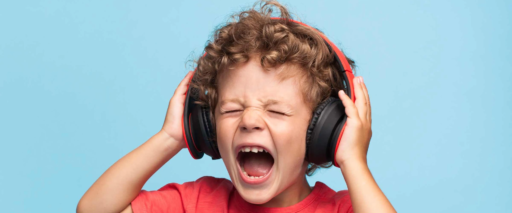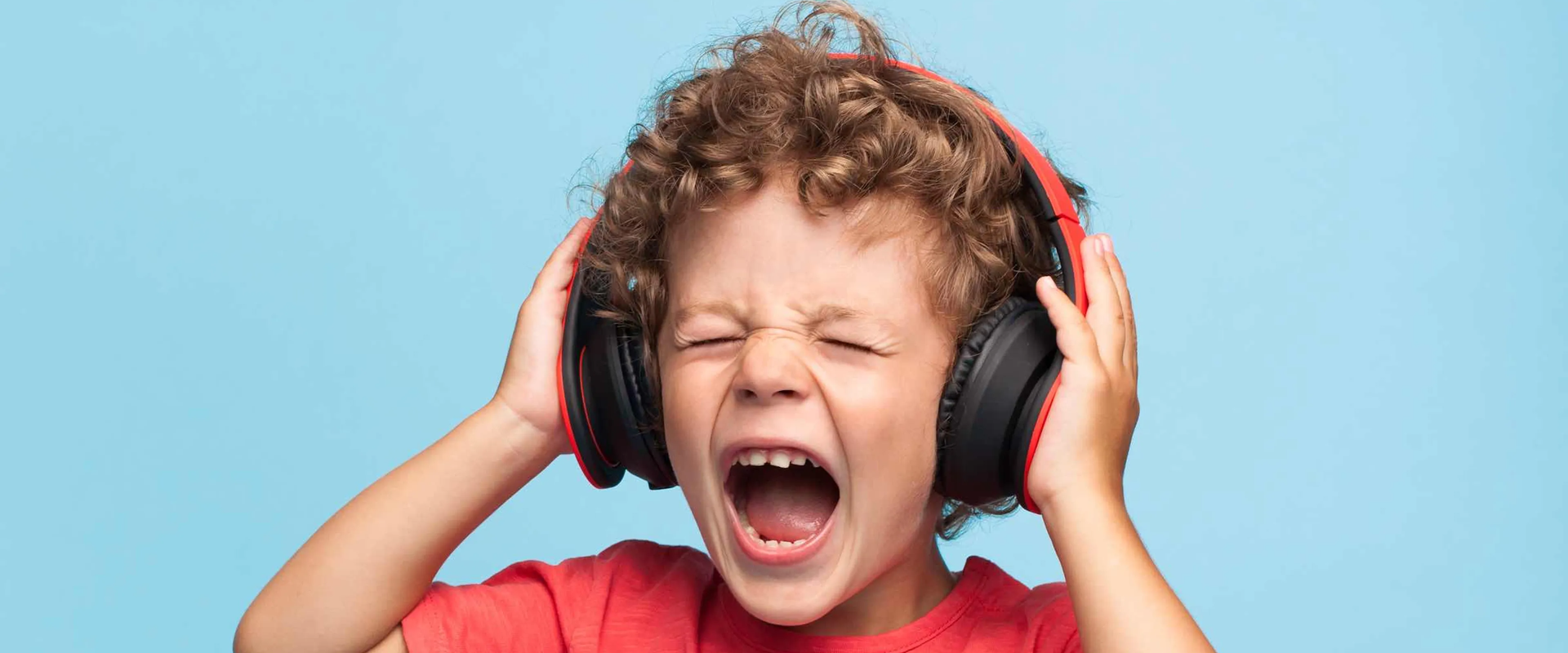Understanding the Impact of Headphones on Children’s Hearing
Children’s ears are more sensitive and vulnerable to damage than adults’. The prolonged use of headphones, especially at high volumes, can lead to significant hearing problems. Here’s why:
- Smaller ear canals: Children have smaller ear canals, which can amplify sounds and make them more intense.
- Developing auditory system: The hearing mechanism in young children is still developing, making it more susceptible to damage from loud noises.
- Cumulative effect: Hearing damage from excessive noise exposure is often gradual and cumulative, meaning the effects may not be immediately apparent but can worsen over time.
The Science Behind Headphone-Induced Hearing Loss
Hearing loss caused by headphones typically occurs due to damage to the delicate hair cells in the inner ear. These cells are responsible for converting sound waves into electrical signals that the brain interprets as sound. When exposed to loud noises for extended periods, these hair cells can become damaged or destroyed, leading to permanent hearing loss.
Key Factors Contributing to Hearing Damage
- Volume levels: Listening at high volumes is the primary culprit. Sounds above 85 decibels (dB) can cause hearing damage over time.
- Duration of exposure: The longer a child uses headphones, the higher the risk of hearing loss.
- Type of headphones: In-ear headphones or earbuds can be more damaging as they sit closer to the eardrum.
Signs of Hearing Loss in Children
Recognizing the early signs of hearing loss in children is crucial for timely intervention. Parents should be vigilant for the following symptoms:
- Difficulty understanding speech, especially in noisy environments
- Frequently asking for repetition or saying “What?” often
- Turning up the volume on devices excessively
- Complaints of ringing or buzzing in the ears (tinnitus)
- Academic struggles or behavioral changes
If you notice any of these signs, it’s essential to consult an audiologist or pediatrician for a proper evaluation.
Protecting Your Child’s Hearing: Essential Tips
While the risks are significant, there are several steps parents can take to protect their children’s hearing when using headphones:
1. Implement the 60/60 Rule
Encourage your child to follow the 60/60 rule: listen at no more than 60% of the maximum volume for no longer than 60 minutes at a time. This simple guideline can significantly reduce the risk of hearing damage.
2. Choose the Right Headphones
Opt for over-ear headphones instead of earbuds. Over-ear models are generally safer as they sit farther from the eardrum. Look for headphones specifically designed for children with built-in volume limiters.
3. Set Volume Limits
Many devices allow you to set maximum volume limits. Take advantage of this feature to ensure your child cannot exceed safe listening levels. For smartphones, you can often find this option in the device’s settings.
4. Teach Safe Listening Habits
Educate your children about the importance of hearing health. Teach them to recognize when sounds are too loud and encourage them to take regular breaks from headphone use.
5. Monitor Listening Environment
Be aware of the environments in which your child uses headphones. In noisy surroundings, kids tend to turn up the volume to compensate. Encourage them to use headphones in quieter settings when possible.
The Long-Term Consequences of Childhood Hearing Loss
The impact of hearing loss in children extends far beyond just auditory issues. It can affect various aspects of a child’s development and quality of life:
- Language development: Hearing loss can significantly impair a child’s ability to learn and use language effectively.
- Academic performance: Children with hearing loss may struggle in school, especially in noisy classroom environments.
- Social interactions: Difficulty hearing can lead to social isolation and reduced confidence in social situations.
- Emotional well-being: Struggling with hearing loss can impact a child’s emotional health and self-esteem.
Given these potential consequences, protecting your child’s hearing is crucial for their overall development and future success.
Alternative Audio Solutions for Kids
While headphones are convenient, there are alternative ways for children to enjoy audio content that may be safer for their hearing:
- External speakers: When appropriate, use external speakers instead of headphones. This allows for better control over volume and reduces direct exposure to the ears.
- Bone conduction headphones: These innovative devices transmit sound through the cheekbones, leaving the ears open. While not a complete solution, they can be a safer alternative in some situations.
- Shared listening experiences: Encourage family listening time where audio content is shared through speakers, promoting both hearing safety and family bonding.
When to Seek Professional Help
If you suspect your child may be experiencing hearing issues, don’t hesitate to seek professional help. Early intervention is key to preventing further damage and managing existing hearing loss. Consider consulting a pediatric audiologist if:
- Your child consistently turns up the volume on devices
- They complain of ear pain or ringing in the ears after using headphones
- You notice changes in their behavior or academic performance
- They have difficulty following conversations or frequently ask for repetition
Regular hearing check-ups can also be beneficial, especially if your child frequently uses headphones or is exposed to loud noises.
FAQs About Headphones and Hearing Loss in Kids
Q: At what age is it safe for children to start using headphones?
A: While there’s no definitive age, it’s generally recommended to wait until children are at least 3 years old before introducing headphones, and only with strict volume control and limited use.
Q: Can noise-cancelling headphones help protect my child’s hearing?
A: Yes, noise-cancelling headphones can be beneficial as they allow for lower volume settings in noisy environments. However, it’s still important to monitor volume levels and duration of use.
Q: Are wireless headphones safer than wired ones?
A: In terms of hearing safety, there’s no significant difference between wired and wireless headphones. The key factors are volume level and duration of use, regardless of the connection type.
Q: How can I tell if the volume is too loud on my child’s headphones?
A: If you can hear the audio from your child’s headphones when standing nearby, it’s likely too loud. Another rule of thumb: if your child can’t hear you speaking at a normal volume while wearing headphones, the audio is too loud.
Q: Can hearing loss from headphone use be reversed?
A: Unfortunately, hearing loss caused by noise exposure is typically permanent. This is why prevention is crucial. Once damage occurs, it cannot be undone, although hearing aids can help manage the condition.
Conclusion: Balancing Technology and Hearing Health
As we navigate the digital age, it’s clear that headphones play a significant role in our children’s lives. While they offer numerous benefits, from educational opportunities to entertainment, the potential for hearing damage is a serious concern that parents must address.
By understanding how headphones cause hearing loss in kids and implementing the protective measures discussed in this article, we can help ensure our children enjoy the benefits of technology without compromising their hearing health. Remember, the habits we instill now will shape our children’s auditory well-being for years to come.
Take action today to protect your child’s hearing. Start by setting volume limits on their devices, investing in child-friendly headphones, and having open conversations about safe listening practices. Your proactive approach can make a world of difference in preserving your child’s hearing for a lifetime.
For more information on children’s hearing health and safe headphone use, check out these related articles:
- Ensuring Comfort with Kids’ Headphones
- Earbud and Headphone Safety for Kids
- How to Choose the Best Headphones for Your Child
- Best Noise Cancelling Headphones for Kids
By staying informed and taking proactive steps, we can ensure our children enjoy the benefits of audio technology while protecting their precious hearing for years to come.






